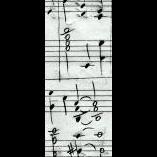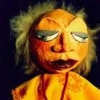Search the Community
Showing results for tags 'percussion'.
-
So I redid one of the background music for my game. The music is put in the background and is meant to add atmosphere to the game. It is faint so that the player won't notice it much.
- 5 replies
-
- percussion
- conga
-
(and 1 more)
Tagged with:
-
Chords I used: Em - B - D - G - Am Some were inversions...I think if I used that term correctly lol. Currently practicing chords and progression so I don't think it's expertly executed but hopefully this proves I'm on the right track. Clashing is also one of my biggest issues I learned from Monarcheon so with this one I tried to fix that without eliminating huge and epic sections of the song. Like I tried to make some parts epic without the clashing so I'm not sure if I done that here or not.
- 2 replies
-
- harpsichord
- choir
-
(and 3 more)
Tagged with:
-
I'm scoring an action video game scene set in a desert Accompanying video:
- 2 replies
-
- percussion
- strings
-
(and 3 more)
Tagged with:
-
I also like minimalism, so, now and then, I put it in practice, just for fun: tonal, modal, phasings, additions, substractions, double valor of notes, modulation note by note, etc....
-
A maxixe, a Brazilian dance.
-
Milieu is a percussion quartet based in Baltimore, MD. Milieu is inviting composers of all ages to submit percussion quartets to be premiered in the first quarter of 2016. Milieu's mission as a percussion quartet is to play music that reflects the values, ideas, and aesthetics of life in 2015; this is the source of our excitement to collaborate with new composers. Broadening the audience of contemporary classical music is a often assumed but undervalued prospect of commissioning new works. When it comes to new repertoire, Milieu is looking for music that starts conversations. The first steps toward engaging a wider audience is closely collaborating with the composer. 3 quartets will be chosen from a pool of applicants and featured at the premiere concert. In addition, 1 quartet will receive a professional film and audio recording of their work. Click here to submit your work. IMPORTANT DATES/DEADLINESOctober 1st, 2015: deadline for submissions November 1st, 2015: composers will be notified of results January/February of 2016: concert of premieres at a TBA venue and date in Baltimore, MD. OTHER INFORMATIONCompositions should not exceed 13'00" in duration. For a detailed list of the percussion equipment we will have access to: click here. For all other inquiries please email chrissalvito@gmail.com
-
- call for scores
- percussion
-
(and 2 more)
Tagged with:
-
I'm sure that most of you know that writing out music is very time consuming, whether you're spending 20 minutes on drawing your staff neatly for your notes to sit on, or constantly erasing notes on Finale because your mouse slipped by a centimeter and placed a Snare Drum buzz roll instead of a rim shot. Over the years of composing marching percussion music, I've developed another method of composing music that may prove useful to composers with limited time. Because this is so different in comparison to the notation that has always been used throughout the history of music, this probably won't gain any popularity at all among percussion composers. But I guess this is worth a shot, since it works for me, and might work for you. So let me begin presenting to you what I call the "Alphabet Notation" for rhythm or percussion. This is what one measure of rest looks like: / [ . . . . ] [ . . . . ] [ . . . . ] [ . . . . ] / / = measure bar [] = one count . = 16th subdivision of a measure A note's value is determined by the number of "." subdivisions that follow it (A 1/16th note having no following subdivisions, an 1/8th note having one following subdivision, and a 1/4 note having 3). Keep in mind that one count can fit four 16th notes in it. The classic "Eights" warm-up would look like this: TD (4/4) / [ 1 . 1 . ] [ 1 . 1 . ] [ 1 . 1 . ] [ 1 . 1 . ] / [ 2 . 2 . ] [ 2 . 2 . ] [ 2 . 2 . ] [ 2 . 2 . ] / And so on... BD (4/4) / [ 1 . 1 . ] [ 1 . 1 . ] [ 1 . 1 . ] [ 1 . 1 . ] / [ 2 . 2 . ] [ 2 . 2 . ] [ 2 . 2 . ] [ 2 . 2 . ] / And so on... SD (4/4) / [ R . R . ] [ R . R . ] [ R . R . ] [ R . R . ] / [ L . L . ] [ L . L . ] [ L . L . ] [ L . L . ] / And so on... For tenor and bassline, notes are represented by numbers corresponding to drum size. s = Spock Drum 1 S = Spock Drum 2 5 = Bass 5 X = rimshot x = stick click r = on the rim For snareline: R/L = right or left hand for each note Rr/Ll = flam notes Rz/Lz = buzzed notes X = rimshot x = stick click r = on the rim Tremolo is tricky, but hear me out. As most of you know, a tremolo line divides the notes value by two and fills the original value with notes of the new value. (A 1/4 note with a tremolo sounds like two eight notes; an 1/8th note with a tremolo sounds like two 16th notes.) In alphabet notation, consider this and maintain the count's value of four 16th subdivisions. When adding tremolo lines in this notation, you need to cancel out the subdivisions that the sound of the tremolo note goes over in that count. For example: (4/4) / [ R . L . ] [ R . L . ] [ R, L, ] [ R, L, ] // The first two counts are normal. But on counts three and four, you can see that I didn't include the second and fourth subdivisions on that count. That's because with the "," tremolo line, the eight note's value doubles into the next subdivision. Applying this concept may become increasingly difficult with drags on 16th notes, thus creating 32nd notes. To put it somewhat simple, you eliminate the "." subdivision that is played over with the preceding tremolo note. Two tremolo lines indicate a double stroke roll, which is basically 32nd notes filling the value of the original note. When placing two tremolo lines on a "[ R . . . ]" quarter note, you would write [ R,, ] since the entire count is played through, leaving no room for "." subdivisions. When placing two tremolo lines on "[ R . R .]" one of two 1/8th notes, you would write [R,, R . ] since the roll fills the 1/8th note value, leaving no room for the subdivision after the "R." Moving on, triplet figures indicated by underlining. For example, (4/4) / [ R L R L R L ] [ R . R L L ] [[ R Rl Rl ]] / [ R L R ] [ L R L ] [ R . . . ] [ R L L ] / [ R . . . ] [ . . . . ] [ . . . . ] [ . . . . ] // **Envision the bracket topped with a "3" that indicates a triplet figure in traditional notation.** The first count in the first measure presents a sextuplet figure, while the second count presents an regular 1/8th note followed by a triplet figure of 1/8th notes. For figures that last more than one count, you can combine the count brackets like I did in the first measure. It presents a triplet figure of quarter notes in the third and fourth counts. And in the second measure, the first, second and fourth counts present 1/8th note triplet figures, with a regular quarter note on the third count. Time signature in boldface preceding the first measure. Dynamics can be placed before the count in which it should be expressed in italics or cursive. Crescendos/Decrescendos between counts. For example: TD (4/4) / f [ 1 . 2 2 ] [ 3 . 4 . ] [ 3, 2, ] [ 1, S . ] / [ 1 1 1, ] > [ 2 2 2, ] > [ 3 3 3, ] > [ 4 4 4, ] > / p [ 4 . 4 4 ] [ . 4 4 . ] [ 4 . . . ] [ . . . . ] // >/< = crescendo or decrescendo And Accents indicated by bold faced notes. I'm sure most of you understand that one count consists of 4 16th subdivisions. That's basically what this notation is based on. There are no rests, you're pretty much looking at the subdivisions for each count and plugging in the notes from there. I believe this can make music translatable through keyboard without needing a special program. And when writing music by hand, this can safe the time-consuming preparations, like drawing the 5-line staff. And this is new, so of course, there's tons of room for evolution if Alphabet Notation turns out useful to anyone else.
- 6 replies
-
- 1
-

-
- percussion
- composition
-
(and 4 more)
Tagged with:
-
Hello one and all. I recently had a school I worked at ask me to write a piece for their middle school band. I'll be honest and confess it has been a very very long time since I reviewed percussion notation (I've been teaching LA not music) and was wondering if anyone had any advice about writing percussion lines for beginners? The students I am writing for will only have been playing for about 1-2 years. I emailed the band director to see how many percussionists she will have for the coming school year but as of yet haven't gotten any information back. My guess is about 6 based on last year's numbers and unless they practiced A LOT over the summer they play about as well as you would expect kids with 2 years of experience to play. I know more complex pieces have multiple instruments per page so individuals assigned more than one instrument can function better but I wanted to know are there any special notation standards for beginners? Are there instruments, rhythms, or techniques that I should be avoiding? I don't want to be torturing these poor kids to the point they want to quit nor do I want to give them parts riddled with mistakes. I would also like for there to be some educational value to what I am asking them to do, but as a cellist I don't really know what the standard progression of 'difficult stuff' for percussionists should be. So basically, any and all advice on beginner percussionists would be most welcome. Thanks in advance to everyone!
- 2 replies
-
- percussion
- music students
-
(and 1 more)
Tagged with:
-
*** deleted ***
-
Hello! I have two high school friends who have asked me to post a call for scores here for a duet of horn and percussion. Deadline: Scores must be submitted no later than 11:59pm, March 7th, 2014, Arizona time (Mountain Standard Time, with no daylight savings). Grand Prize: The winner's piece will be performed by the duo in an April concert at Payson High School, in Payson, Arizona. A video recording of the piece will be made and a copy of the video recording will be provided to the winning composer. A copy of the winning composition will also be kept in the Payson High School Music Library for future study and performance by students. Process for Deciding a Winner: The winning score will be chosen by a jury of the two performers and their director (a total of three jury members). The jury will select the winning piece no later than March 14th, 2014. The winning score will be announced here and the winning composer will be contacted by personal message on this site, unless another form of contact is requested. The winning composer must provide their name, or the pseudonym they wish to appear on the program, as well as information on how a digital copy of the recording of the performance may be sent to them. Legal Mumbojumbo: The Payson High School Band/Music Director reserves the right to remove the piece from the program without notice and at any time. The Payson High School Band/Music Director reserves the right to remove the piece from the Payson High School Music Library at any time and without notice or notification. The following is a message from the duo with their further requirements for the piece. :
- 1 reply
-
- competition
- call for scores
-
(and 2 more)
Tagged with:
-
Hi everyone! I am working on an arrangement for jazz band that is almost entirely in 9/8 or 9/4. As with most latin charts, this arrangement will rely on a solid percussion groove. However I don't know a whole lot about latin rhythms apart from what I picked up by watching our high school jazz drummer, and on top of that, I can't find any examples of 9/8 latin to build off of. I was hoping there might be an expert here who knows of any musical examples that apply to what I'm trying to do, or who can give me some much-needed advice! Attached is my attempt at my 9/4 latin groove, with the option of two different bass drum parts: drum sample 2.pdf In the above drum pattern, I am trying to accommodate for two different beat divisions, which fit two different bass guitar lines at different parts of the song: 1) 9/8 + 9/8 or 3-2-2-2 + 3-2-2-2 2) 7/8 + 7/8 + 2/4 or 3-2-2 + 3-2-2 + 2-2 Since I don't really know exactly what I'm doing, I would appreciate any comments/suggestions. If you need more detail into what I'm aiming for please let me know. Thanks!
-
Hi! I'm new to this forum so I'm not quite sure if I'm posting in the right section here. Forgive me if it's the wrong one. I am trying to find out what kind percussion is being used in this clip @ 2:41 It's really a type of sound that is used in a lot of horror movies (and action/thrillers too). I heard it a lot of times. It is used in the movie "Valentine". You can hear it at 2:41 in this clip which is from the film itself. Link to Valentine clip: I'm not talking about the timpani heavy drum, but the intense short and loud metallic kind of sound on top of it with the reverb. It's a strong kind of sound and it reminds me of a metallic pipe being hit against a floor or something like that. Perfect for horror and thriller score. Another example is from Aliens (1986) in the piece "Bishop's Countdown". In this example you can hear it already from the very start of the clip. It's less pronounced but this time it appears more often than in the first clip. You can hear it as a part of the general percussion. Link to Aliens clip: http://www.youtube.c...h?v=f2XHvi4EzCw The reason I'm looking for this is because I plan to use this sound in one of my own compositions/mix. Does anyone know what kind of percussion this is? And I would also be interested in finding a sample library that contains this sort of sound, if there is one. I hope someone can help me on this! Ole
- 3 replies
-
- percussion
- film
-
(and 3 more)
Tagged with:






